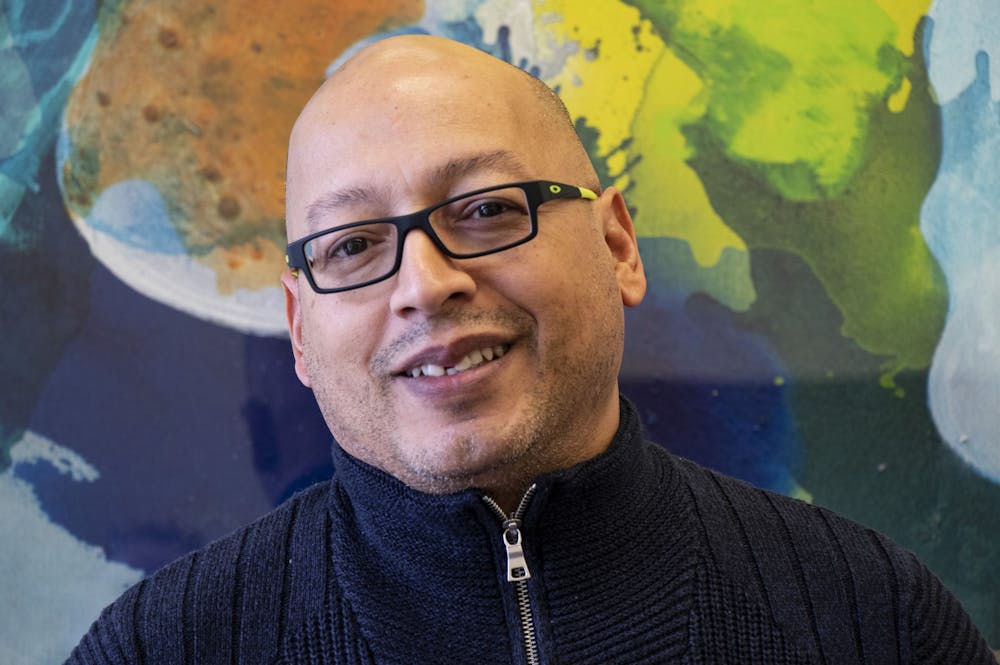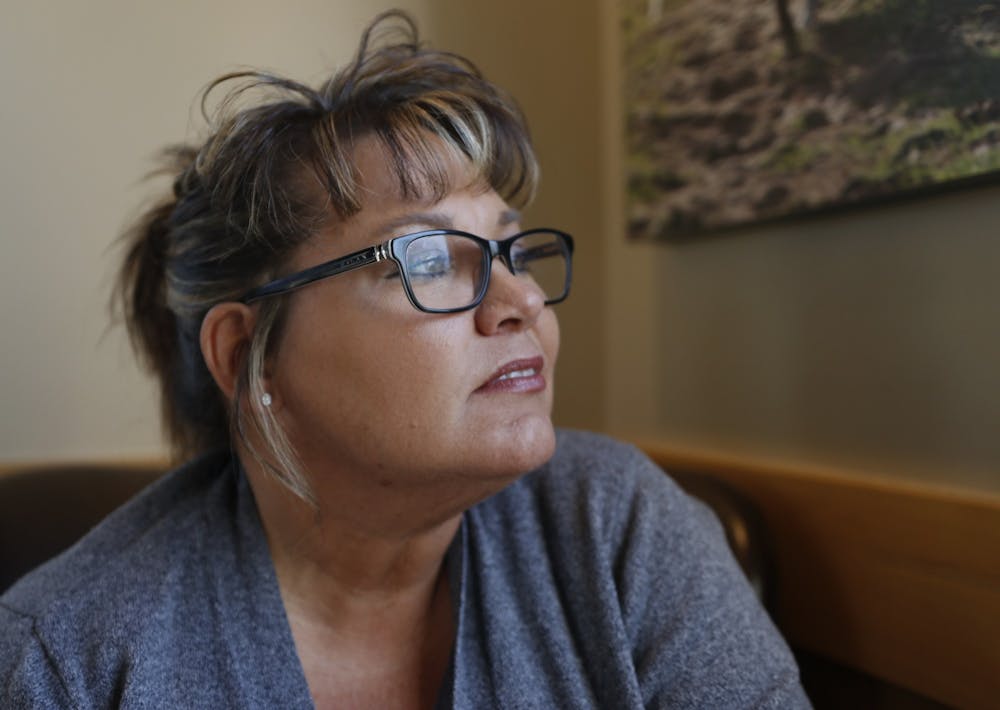TOP PHOTO Lucy, 8, poses for a picture with her Juvenile Diabetes Research Foundation bear in her home. She practices giving insulin injections with him.
Clean the finger, so the needle goes in nicely. Pull back the trigger. Brace for a small, sharp pain - many patients bite their tongues at this step. Push the button.
The three-step process to check blood sugar in diabetes patients isn't a complicated one. Prick your finger, watch the blood ooze out and dab it on a test strip to be checked in a glucose monitor. But it can be scary and difficult to understand for younger patients such as 8-year-old Lucy Matthews.
Her parents, Ashley and Garrett, call the process "the pokie" to make it easier on their daughter. Lucy still hates it.

Ashley Matthews inserts a Dexcom g5, a monitor that continuously checks blood sugar, into her daughter Lucy’s arm. Dexcom's continuous glucose monitors are used to monitor the glucose levels of diabetics.
Lucy, a Scottsburg, Indiana, native, loves to draw. She loves to dance and tell jokes. She is a very social child, spending as much time as she can with her friends and grandparents. She loves eating ice cream, and her favorite color is purple. She has lived with Type 1 diabetes for three years.
Type 1 diabetes is an autoimmune chronic condition in which the pancreas produces little to no insulin, a hormone needed to control sugar levels. Diabetes, both Type 1 and Type 2, affects 34.2 million people in the United States. Of those, only 1.6 million people live with Type 1 diabetes. It's not preventable and has no cure.
Insulin pricing has spiked in recent years, prompting a national conversation as patients struggle to cover ever-increasing costs. Both Colorado and Illinois have capped the price of the insulin. A proposed bill to cap the price of a month's supply of insulin at $100 was voted on March 3 in the Indiana State Senate but failed in a vote of 13-36.
One vial of Eli Lilly's Humalog, a fast-acting form of insulin, has gone from an average $35 in 2001 to $332 in 2020.
The amount of insulin a patient needs varies, with patients typically requiring more as they grow older and gain weight. Lucy goes through three vials of Humalog, nearly $1,000 worth of insulin, a month.
One vial of Eli Lilly's Humalog, a fast-acting form of insulin, has increased from $35 in 2001 to $332 in 2020.
Insulin was discovered in 1921. Its patent was sold for $1.
A study under the Yale Diabetes Center found that 1 in 4 patients at the urban clinic at Yale reported underusing insulin because of the price.
***
Being diabetic means Lucy has had to grow up just a little bit faster. The days of thoughtlessly eating cookies are over. Everything has a carb count. She has to be given insulin every time she eats.
When she runs around and plays with her friends, adults around her have to be ready to swoop in at a moment's notice if she needs medical help. Her blood sugar could quickly fall, and she could pass out. Or, her sugar could start to skyrocket and she could start puking. Her family now has to juggle how to best take care of her and how to let her be a kid.
Cheerful laughter filled the living room in the Matthews' home one afternoon in February as Lucy and her cousins ran around playing. Later, Lucy sat in the kitchen with her cousins and mom about to play the offline texting card game, New Phone, Who Dis? when one of her cousins grabbed a cookie. Wanting one herself, Lucy jumped up on the counter.

Lucy, 8, gives herself insulin before eating a snack. Lucy and her mother must always check her blood sugar and administer the right amount of insulin to keep her numbers in check.
She asked Ashley: "Mom, how many units for this?"
Ashley checked her daughter's sugar on an app from her Dexcom sensor, a constant glucose monitor Lucy wears, to determine how much insulin her daughter needed to take for the treat.
"Give 10 and I will keep a look on it," Ashley said.







